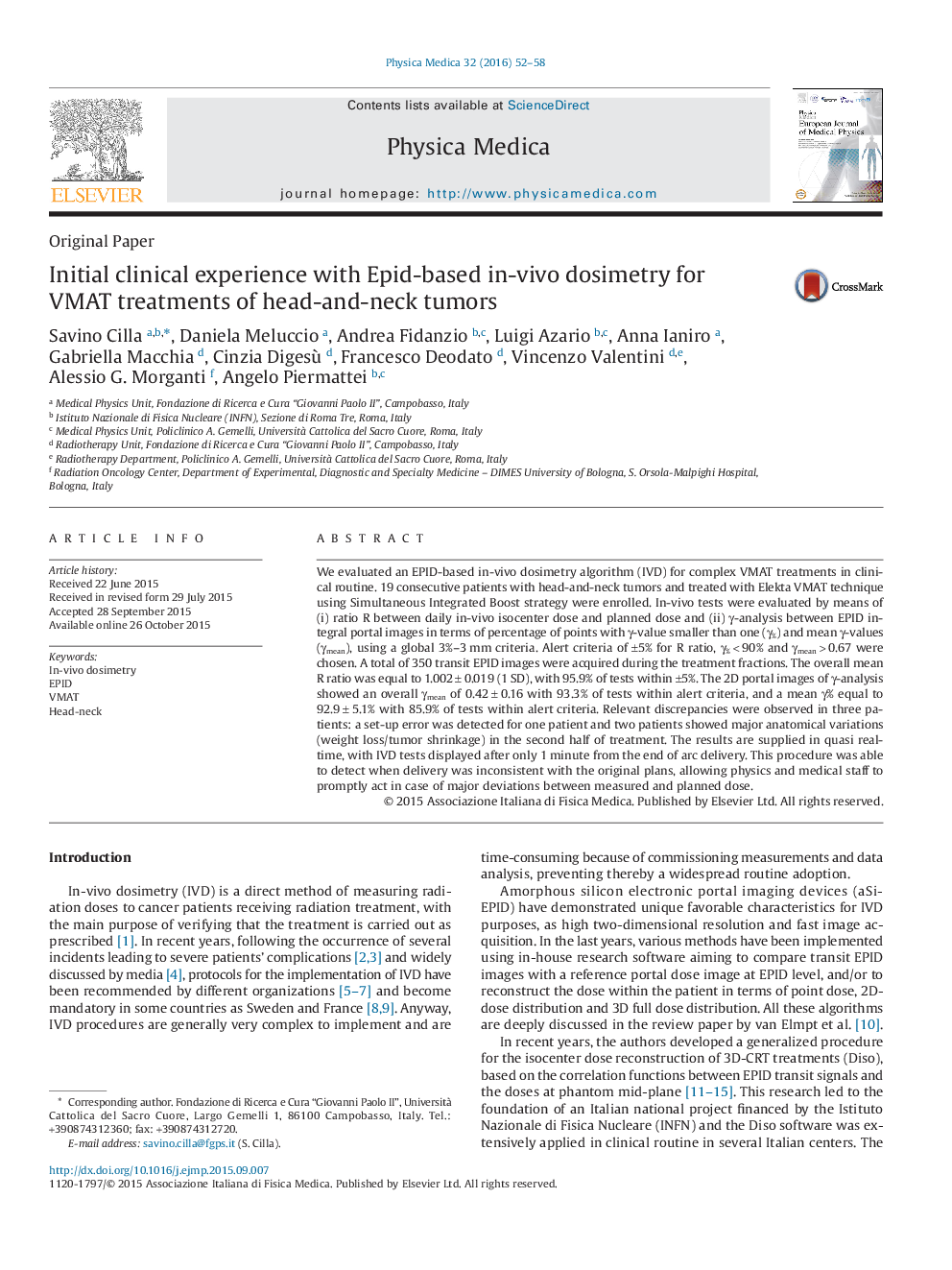| Article ID | Journal | Published Year | Pages | File Type |
|---|---|---|---|---|
| 10730993 | Physica Medica | 2016 | 7 Pages |
Abstract
We evaluated an EPID-based in-vivo dosimetry algorithm (IVD) for complex VMAT treatments in clinical routine. 19 consecutive patients with head-and-neck tumors and treated with Elekta VMAT technique using Simultaneous Integrated Boost strategy were enrolled. In-vivo tests were evaluated by means of (i) ratio R between daily in-vivo isocenter dose and planned dose and (ii) γ-analysis between EPID integral portal images in terms of percentage of points with γ-value smaller than one (γ%) and mean γ-values (γmean), using a global 3%-3âmm criteria. Alert criteria of ±5% for R ratio, γ%â<â90% and γmeanâ>â0.67 were chosen. A total of 350 transit EPID images were acquired during the treatment fractions. The overall mean R ratio was equal to 1.002â±â0.019 (1 SD), with 95.9% of tests within ±5%. The 2D portal images of γ-analysis showed an overall γmean of 0.42â±â0.16 with 93.3% of tests within alert criteria, and a mean γ% equal to 92.9â±â5.1% with 85.9% of tests within alert criteria. Relevant discrepancies were observed in three patients: a set-up error was detected for one patient and two patients showed major anatomical variations (weight loss/tumor shrinkage) in the second half of treatment. The results are supplied in quasi real-time, with IVD tests displayed after only 1 minute from the end of arc delivery. This procedure was able to detect when delivery was inconsistent with the original plans, allowing physics and medical staff to promptly act in case of major deviations between measured and planned dose.
Keywords
Related Topics
Physical Sciences and Engineering
Physics and Astronomy
Radiation
Authors
Savino Cilla, Daniela Meluccio, Andrea Fidanzio, Luigi Azario, Anna Ianiro, Gabriella Macchia, Cinzia Digesù, Francesco Deodato, Vincenzo Valentini, Alessio G. Morganti, Angelo Piermattei,
